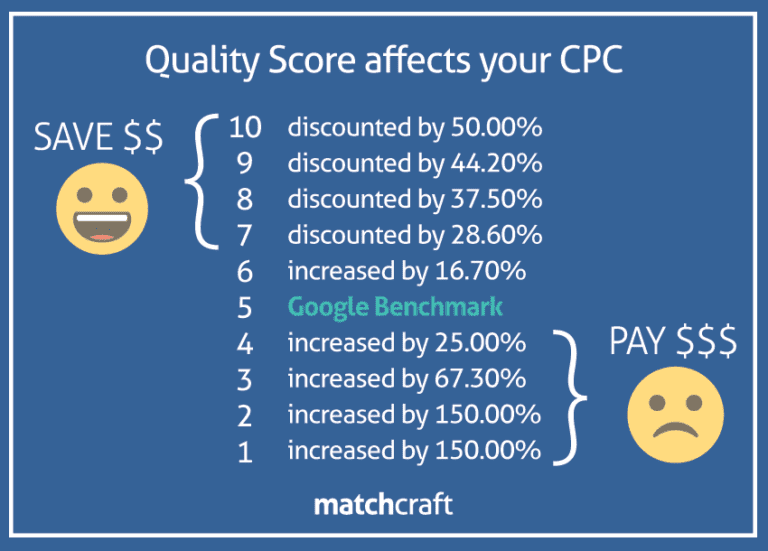If you’re a business decision maker or marketer, you’re surely familiar with Search Engine Optimization (SEO), even at a high level. But are you familiar with Search Engine Marketing (SEM) and do you understand how SEM and SEO work together to improve your marketing strategy and your ability to get found by users across the web?
SEO is the process by which you get your website page to rank well with search engines, and it’s key to maximizing traffic from organic search results. If you’re looking for ways how to improve SEM, it’s important to leverage SEO in your strategy. The two can work together to get your business noticed.
SEO vs. SEM
SEO and SEM both can help bring awareness to your website through search engines, but the two are actually very different.
SEO focuses to optimize your website content, allowing it to appear seemingly naturally in search engine results. On the other hand, SEM is when marketers place paid ads for your company at the top of search engine results pages. These often show in the form of sponsored links or sponsored results boxes.
While either can be helpful, making both processes a part of your digital marketing strategy can help ensure that you get the most traffic to your content.
The basics of SEM
The digital marketplace is hugely vast and competitive. It’s important to prioritize online advertising in your marketing strategy, that is, if you want to get noticed. This is where SEM works its magic. It allows all advertisers to make bids on target keywords – words or phrases that users may be entering when they’re searching for products or services.
When users type these key phrases and words into search engines like Google, SEM allows for your ad – highlighting those same keywords – to appear right in those search results. In other words, it’s a way to get noticed even if your site is not perfectly ranking for a specific keyword.
These ads are referred to as pay-per-click ads (PPC ads) and they come in a variety of sizes and formats. Some may be heavier on copy; others may be more visual or product-focused. But the key is that these ads are appearing at the exact time that searchers across the web are looking for those exact keywords that you’re attempting to be found for.
It’s this timing – the ability to pay for it and to bid for it – that makes PPC ads and SEM so remarkable.
How SEO differs from SEM
Now, SEO on the other hand, is an attempt to do the same thing as SEM, but it’s not an exact science. It’s also not a paid service (there are no guarantees). Behind every search engine is a complex set of algorithms that decide on the best search results for the user.
Unlike SEM and PPC ads, SEO works to disrupt this algorithm process by enhancing the content on your website. The goal: make sure your content gets noticed by search engines, and in turn, is displayed for users when they search for those keywords. It’s not guaranteed and it’s a complex, constantly evolving process.
This is why smart marketers tend to use a blend of SEO and SEM strategies to garner website traffic.
Here are some basic components of SEO optimization that can help boost your search engine score.
- Site performance: A site that functions well and loads fast will receive a higher score than one that is slow or not working properly
- Site content: This is the actual written content on a site, the number of keywords used and the titles on a page that directly influence its search engine ranking
- User experience: The site’s ease-of-use also factors into search engine ranking.
- Authority: Your site will rank high if it is deemed authoritative by a search engine. Authority is determined by things like links back to the site and citations for your information.
How SEO and SEM work together to improve site traffic
Both SEO and SEM revolve around keywords. For both strategies, you must decide which keywords are critical to your business.
How are users currently discovering your products and services? Which pages on your website rank or don’t rank? You’ll want to look at how your current website pages are performing and allow that information to guide your roadmap forward.
Now, you may think that SEM is all about budget. More money, more PPC ads, right? That’s not true. Sure, it’s helpful to have a big budget. But every marketer must go through an “ad auction” to “win”. Take Google Ads, for instance.
First, advertisers state how much they are willing to spend on any given keyword. Google then looks at every single search as it rolls in. If the keywords you’re looking for are within someone’s search terms, then you get entered into what’s called an auction.
Again, it’s not necessarily about the spend. Google also evaluates the Quality Score of your ads. They want to see how much you’re willing to pay, but they also want to ensure that you’re not putting junk out onto the web. Combined – your maximum spend, plus ad quality — spits out what is known as an ad rank.
Your ad quality is crucial. Google is quite partial to ads with high quality. So, they may be willing to place you – for less expense – if your ad scores high in the quality department.
How does SEO affect your SEM?
One of the best strategies for promoting your SEO-optimized web content is using SEM. Some of the cornerstones of SEM are paid ad techniques like Google Ads, BingAds, Facebook Ads, Instagram ads and more. You can place paid ads promoting your site on platforms that already have a following, and then generate leads by impressing site visitors with content that is well-written, authoritative and relevant.
But you may be wondering: how do you know that your SEM efforts aren’t cannibalizing your SEO efforts? As a digital marketer, you want to spend time on both strategies, but not at the cost that you may be working in a self-sabotage mode.
Here’s the deal. If your paid search ads do not run, you’ll definitely see a dip in visits to your website when you view your paid search click reports. The people who type search queries into a web browser are beyond anyone’s control. But as PPC traffic spikes, there is almost no doubt that these SEM efforts are taking away from SEO efforts.
“This is a zero sum game for visits: the same number of people are making searches, arriving at the SERP, but are ever more likely to click a paid ad. Marketers are paying for a proportion of clicks that would have come anyway via organic. Paid Search is cannibalizing clicks from Organic Search.”
The safest response is a blend of both SEM and SEO, a digital marketing strategy that incorporates both paid and organic promotional efforts. You will ultimately have an advertising plan that works stronger than either technique would be on its own.




